Menus
- Approval marks, entries, general operating permit
- Registration-free components
- Type approval, registration free
- TÜV, Dekra, GTÜ: Who can enter?
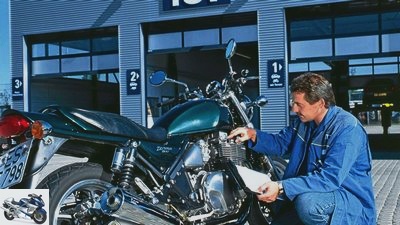
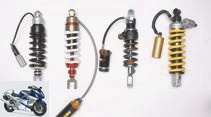
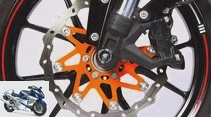
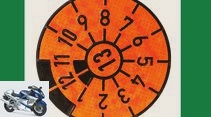

14th photos
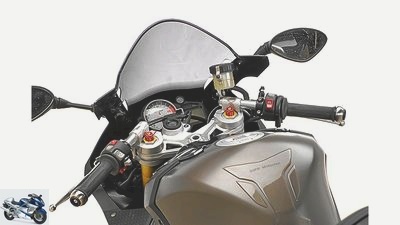
1/14
Steering, braking, damping: …
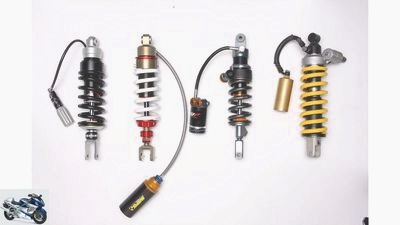
2/14
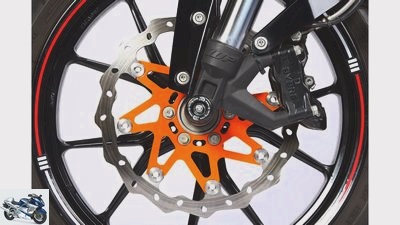
3/14
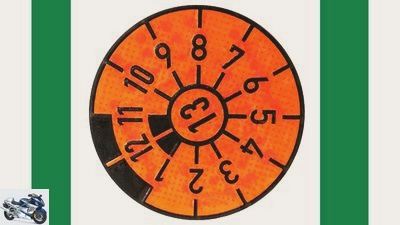
4/14
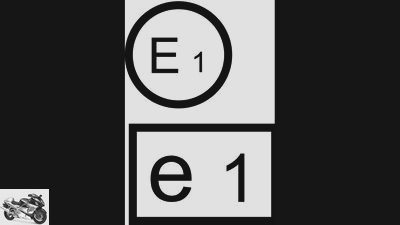
5/14
… has better cards at the on-site inspection.
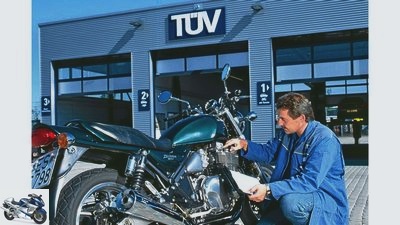
6/14
Those who rely on tested components, …
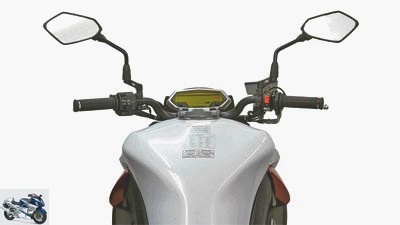
7/14
Motorcycle mirrors must not be less than 69 cm² for a type approval.
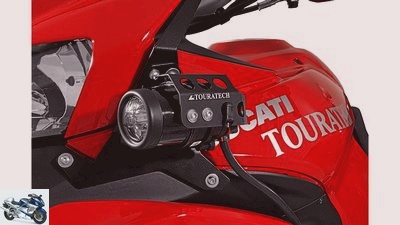
8/14
When installing fog lights, you should not neglect certain requirements, such as the height and the distance from one another.
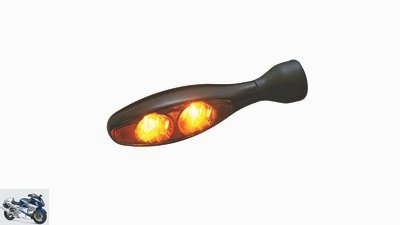
9/14
In the case of mini indicators, the code that provides information about the installation location (front, rear) must be correct.
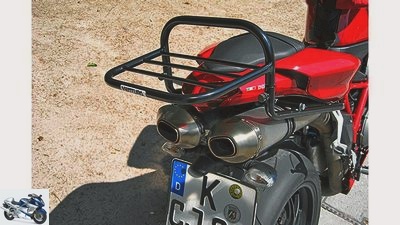
10/14
… and porters are usually free of entry.
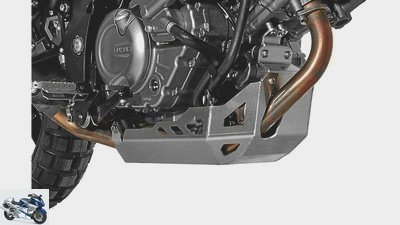
11/14
Functional add-on parts such as engine protection trays or bars …
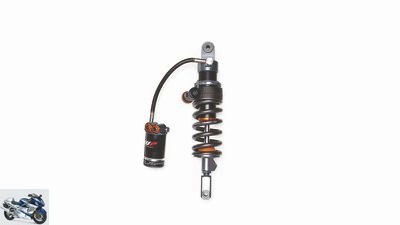
12/14
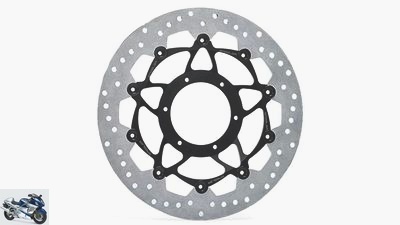
13/14
… Parts that influence driving behavior must be entered.
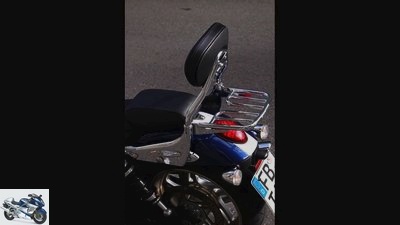
14/14
Motorcycle conversion and tuning guide
Approval marks, entries, general operating permit
A few rules of the game must be followed when converting the motorcycle. Therefore, at this point, the most important information about paperwork around certification marks, entries and the famous general operating permit.
JEvery motorcycle on our roads requires an operating permit in accordance with the Road Traffic Licensing Regulations (StVZO). The general operating license – known under the abbreviation ABE – is issued by the Federal Motor Transport Authority for a manufacturer’s series vehicles. The ABE is, so to speak, the confirmation that a motorcycle complies with German standards. However, modifications to the vehicle can invalidate the ABE, namely if …
Buy complete article

Motorcycle conversion and tuning guide
Approval marks, entries, general operating permit
Components subject to registration
All modifications to the motorcycle mentioned here are subject to registration. ABE (correct in this case: operating permit for vehicle parts) or parts certificate are required for accessories. Components for which there is an ABE do not have to be approved by the TÜV, but are still subject to registration, unless the ABE is constantly carried. A parts certificate is usually required for more complicated conversions. This is issued by the officially recognized expert or inspector after successful acceptance; entry in the vehicle documents is mandatory. This particularly applies to the following components:
- Brake discs
- Struts
- fork
- Rear (raising and lowering)
- Handlebars
- Tires (with dimensional changes)
- Swing arm
- tank
- Carburetor
- Disguise
Registration-free components
On the other hand, there are components that not only change the look of the motorcycle, but also influence comfort or functionality. These changes do not have to be entered, nor do they require a parts certificate, ABE or EG-BE. The most important principle, however, is that they do not affect the road safety of the motorcycle. If you are unsure, you should inquire in advance at a test center on site (TÜV, Dekra, GTÜ).
- battery
- Tachometer
- Luggage rack (unless there is a significant change to the vehicle)
- Heated grips
- Kickstarter
- Motor protection tray
- Pinion (with identical number of teeth)
- Seat (while maintaining the original length; note holding device for pillion passenger)
- Hazard warning lights
- Spark plugs (but must meet radio interference suppression specifications)
Type approval, registration free
archive
In the case of mini indicators, the code that provides information about the installation location (front, rear) must be correct.
This category mainly includes components that belong to lighting. These do not require any registration, they simply have to have an EC or ECE certification mark. The ECE test mark can be awarded by the approval authorities of all states that belong to the ECE legal group. The EC test mark is awarded by an EU member state with validity for the entire European Community. However, this is just a matter of bureaucracy, in practice there is no difference between the symbols. The national test marks that are issued by the Federal Motor Transport Authority and thus confirm the general operating permit of a component under German law are now rare, but still valid. However, certain basic rules must be observed when growing. Ideally, this is described in well-documented instructions. Therefore, you should also pay attention to this when buying. These parts, among others, must have a type approval:
- indicator
- lightbulbs
- horn
- License plate lighting
- Mini indicators
- Headlights
- mirror
- Taillight
- Reflector (when mounting, the angle
- perpendicular to the road)
TÜV, Dekra, GTÜ: Who can enter?
As a rule, TÜV, Dekra, GTÜ and KÜS are equally responsible for all approvals, entries and reports. However, if an individual acceptance test is required to issue an individual operating permit (EBE) due to custom-made or one-off productions, massive modifications or other reasons in accordance with Section 21 StVZO, this may only be carried out by technical testing centers which, in the old federal states, are only carried out by TÜV and in the new federal states are only operated by Dekra.
If you are not sure whether your planned conversions can be approved at all, you should first seek advice from the responsible expert or inspector and of course have the relevant details ready. Because these can very quickly be decisive as to whether a permit can be granted and what kind of expert opinion is required. You should also inquire about what the fun will cost in advance, because the prices for approvals and entries increase with the effort involved in the assessment. There are no nationwide uniform prices for this, but the differences between the individual federal states are rarely more than a few euros. An individual acceptance costs at least 30 euros, the mandatory entry costs at least as much.
Related articles
-
The 20 greatest motorcycle flops of modern times
Photo: archive 20th photos Manufacturer 1/20 1st place: BMW C1. archive 2/20 10th place: Suzuki TL 1000. archive 3/20 9th place: Aprilia RST 1000 Futura….
-
Tuning motorcycle: Ducati Berlin Speedfighter
fact Race bike: Ducati Berlin The Speedfighter from Ducati Berlin Content of Largely unexplored in space, the terrestrial version of dark matter poses no…
-
Five-generation motorcycle comparison
20th photos 1/20 Zundapp K 800 sidecar, DKW RT 175, Honda XL 250 Motorsport, BMW R 100 R Mystic and Ducati Multistrada 1200 S…
-
Punch Moto: electric motorcycle from Belarus
Punch Moto. 9 photos Punch Moto. 1/9 This pocket bike is called Punch Moto and comes from Belarus. Punch Moto. 2/9 The bike is somewhat reminiscent of…
-
Alpen Masters 2012: the best motorcycle for the Alps
Gargolov 11 photos Jahn 1/11 A total of 21 motorcycles in the categories of athletes, all-rounders, travel enduros, fun bikes and naked bikes were tested…
-
Hobby motorcycle Honda CB 900 F Bol d ?? Or
Artist 26th photos Artist 1/26 Artist 2/26 Artist 3/26 Artist 4/26 Artist 5/26 Artist 6/26 Artist 7/26 Artist 8/26 Artist 9/26 Artist 10/26 Artist 11/26…
-
Kawasaki Z 800 versus Yamaha FZ8 in MOTORCYCLE group test
12th photos 1/12 Yamaha FZ8 versus Kawasaki Z800 in comparison test. 2/12 Clearly structured cockpit, but with…
-
Kawasaki Kawasaki Z 750 R (2011) The R version offers factory tuning Content of Kawasaki’s Z 750 gets a sporty sister to the side. As the R version, this…
-
Cake Kalk OR in the test: electric motorcycle from Sweden
Beyl 25th photos Ridecake 1/25 The Swedish manufacturer Cake launched a small enduro, the Kalk OR, in 2018. Ridecake 2/25 The company philosophy of Cake…
-
Classic motorcycle Zundapp KS 175
Sven Krieger 23 photos Sven Krieger 1/23 In 1976, Zundapp wanted to put out the Japanese conflagration with the help of a liquid-cooled 17 HP machine. In…